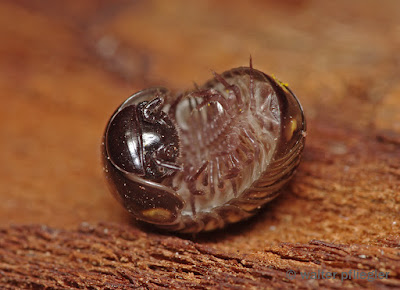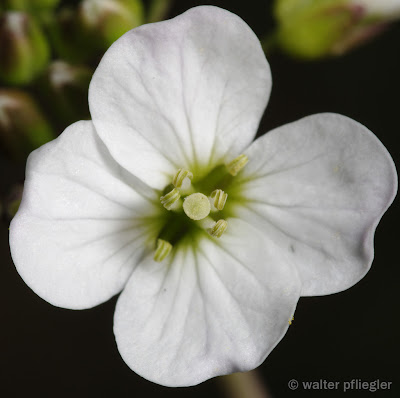In April I traveled to Nyírábrány in East Hungary to some moors and to some open sandy grasslands nearby to take photos. The flora and fauna of this area is typical of the Nyírség landscape area, which is an north-eastern part of the great Hungarian Plain. There were once extensive birch moors (the lands got its name after the Hungarian word for birch), swamps, lowland oak forests and open sandy grasslands here. Nowadays the land is mostly agricultural, but there are still many places for taking nature photos here. Several such areas are protected also. Location: Nyírábrány. Date: 07-16.04.2011.
Áprilisban Nyírábrányba, néhány láphoz és közeli nyílt homoki gyephez utaztam fotózni. Az itteni flóra és fauna tipikusan nyírségi. Valaha nagy kiterjedésű nyírlápok (amikről a tájegység a nevét kapta), mocsarak, alföldi tölgyesek és nyílt homoki gyepek voltak errefelé. Manapság a terület jó részén mezőgazdasági művelés folyik, de még mindig sok terület jó lehetőséget nyújt a természetfotózásra. Számos ilyen terület védettség alatt is áll. Hely: Nyírábrány. Dátum: 2011.04.07-16.
Two pictures of a moor habitat near a small lake. I particularly like this area as searching here always yields in some rare insects (mainly in spring).
Két fotó egy lápos élőhelyről. Ezt a területet nagyon kedvelem, mert errefelé mindig érdekes rovarokra lehet bukkanni (főleg tavasszal).
Some Field Horsetails were still blooming (Equisetum arvense):
Néhány mezei zsurló még virágzott (Equisetum arvense):
The Kingcup or Marsh Marigold always grows near water (Caltha palustris):
A mocsári gólyahír mindig víz közelében nő (Caltha palustris):
The Fire-bellied toad in the moor (Bombina bombina):
A vöröshasú unka a lápos részen (Bombina bombina):
The rare Swamp Cricket (Pteronemobius heydeni) was also found here:
A ritka mocsári tücsköt is itt találtam (Pteronemobius heydeni):
A nice Blue Shield Bug (Zicrona caerulea):
Egy szép acélkék címerespoloska (Zicrona caerulea):
On a sandy meadow I spotted some Northern Dune Tiger Beetles (Cicindela hybrida hybrida). They were bathing in the sun, and when I came close them they quickly away - but these beetles are not able to fly for long distances, they quikly dropped down a few meters away. After some 15 mintues of chasing them I finally managed to shot some photos.
Egy homokos talajú réten néhány öves homokfutrinkát vettem észre (Cicindela hybrida hybrida). Éppen napoztak, és mikor a közelükbe értem, gyorsan felröppentek - de ezek a bogarak nem jó repülők, így hamar lehuppantak néhány méterrel arrébb. Kb. 15 percnyi üldözésük után végül sikerült pár fotót készítenem.
It has the face of a killer:
Gyilkos arcvonásai vannak:
A moth caterpillar:
Egy éjjeli lepke hernyója:
A Sphecodes sp bee:
Egy Sphecodes sp méh:
A small velvet mite, Platytrombidium fasciatum from the family Microtrombidiidae.
Egy kis bársonyatka, Platytrombidium fasciatum a Microtrombidiidae családból.
In a local dog I found a flea (or, rather, the flea has found me). This is the Human Flea, Pulex irritans, a female. I caught it, than placed back on my hand to take photos. It wasn't in a good shape, did not move much and luckily did not start to feed.
Egy helyi kutyában találtam egy bolhát (vagy inkább a bolha talált meg engem). Ez az emberbolha, Pulex irritans, nőstény. Elkaptam, majd visszaraktam a kezemre, hogy lefotózzam. Nem volt túl jó állapotban, nem mozgott sokat és szerencsére enni sem kezdett el.
On another occasion in Nyírábrány, we went to a place called Keszlertag. There are still some people who keep sheep and cattle around here, and these grazing animals help to maintain the sandy open meadows in a healthy state. In areas in the Nyírség and the bordering Hajdúság region where no more sheep and cattle are kept, bushes and the aggressive Black Locust trees start to grow over these valuable habitats and many rare and protected perennial plant species vanish. Mechanical mowing does not help these habitats, as is destroys the protected flowers also. So these household animals can be really useful for nature conservation. Also, their dung is a food source for many beetle species that are already extinct from many places in Europe. Before the Middle Ages, these meadows were grazed by Aurochs and European Bisons and played the role which is (or should be) played by the livestock nowadays.
Egy másik alkalommal Nyírábrányban járva elmentünk a Keszlertag nevű helyre. Errefelé még vannak néhányan, akik birkákat és szarvasmarhát tartanak. Ezek a legelő állatok segítenek egészséges állapotban tartani a nyílt homoki gyepeket. A Nyírségben és a határos Hajdúságban azokon a helyeken, ahol már nem folyik ilyen legeltető állattartás, ezeket az értékes élőhelyeket benövik a bokrok és az agresszív akác, ami miatt számos védett lágyszárú növény eltűnik. A gépi kaszálás sem segít ilyenkor, mert az elpusztítja a védett virágokat is. Tehát ezek a háziállatok igen hasznosak lehetnek a természetvédelem számára. Emellett trágyájuk számos, Európa sok részén már kipusztult bogárfaj tápláléka. A Középkor előtt ezeket a gyepeket őstulok és európai bölények legelhették, és játszották azt a szerepet, amelyet ma a háziállatoknak kell(ene) ellátniuk.
Biralus satellitius, a dung beetle from the Aphodiinae subfamily:
A címeres trágyabogár (Biralus satellitius) a trágyabogárformák alcsaládjából:
A nice big weevil:
Egy szép nagy ormányosbogár:
In a decaying willow tree, we found some beetles, among them this Death Watch Beetle (Xestobium rufovillosum), which makes a ticking sound inside the dead wood to attract mates. In times when there were more wooden houses, its sound was considered a bad omen, the sound of the death's clock, by superstitious people.
Egy korhadó fűzfában találtunk pár bogarat, köztük a tarka kopogóbogarat (más néven halálórája, Xestobium rufovillosum), mely a holt faanyagban kopogó hangot hallat, hogy párt találjon magának. Mikor még több faház volt, hangját a babonás emberek rossz ómennek, a halál órájának tartották.
In the decaying wood, we also found a pill milliped (Glomeris tetrasticha), which suprised me, as I usually find them in mountain forests.
A korhadó fában találtunk egy gömbsoklábút is (Glomeris tetrasticha), ami meglepett, mert általában hegyi erdőkben akadok rájuk.
A linyphiid spider with an interesting head-form, a Hypomma sp male:
Egy vitorláspók fura alakú fejjel, egy Hypomma sp hím:
Mosaic Puffball (Handkea utriformis):
Pikkelyes pöfeteg (Handkea utriformis):
Pikkelyes pöfeteg (Handkea utriformis):
This huge tumor on this Black Locust tree was most probably caused by Agrobacterium. These bacteria use horizontal gene transfer to cause tumors in plants.
Ezt a hatalmas tumort ezen az akácon valószínűleg az Agrobacterium okozta. Ezek a baktériumok horizontális géntranszfert használnak tumorok indukálására növényekben.
Fen Cuckoo Flower (Cardamine dentata):
Réti kakukktorma (Cardamine dentata):
Réti kakukktorma (Cardamine dentata):
A Tufted Sedge (probably) (Carex elata):
Egy zsombéksás (valószínűleg) (Carex elata):
Another plant from the sedge family:
Egy másik növény a palka- vagy sásfélék családjából:
Bristly Haircup (Polytrichum piliferum):
Pillás szőrmoha (Polytrichum piliferum):
For the end, the Cypress Spurge (Euphorbia cyparissias) and its strange flowers, where the sepals play the role of the petals:
A végére a farkas kutyatej (Euphorbia cyparissias) és furcsa virága, melyben a szirmok szerepét a csészék vették át:




































No comments:
Post a Comment